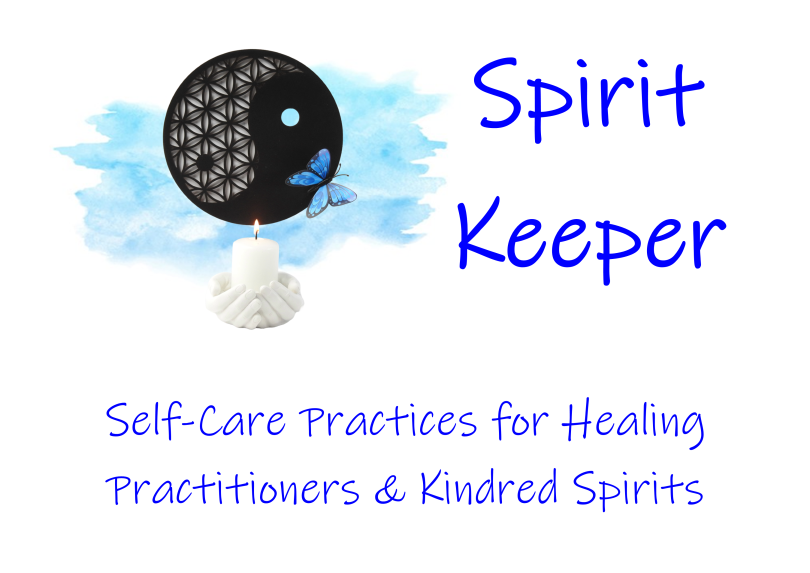Welcome, to Health & Wellbeing Magazine’s Spirit Keeper monthly column. This is the place where you will discover tips and practices for creating, developing and maintaining a personalised self-care practice.
If you are new to this month’s Spirit Keeper column, I recommend reading past articles to find out what a spirit keeper is and subjects already covered around self-care practices.
Solstices are celebrated worldwide with various rituals. In this month’s column we are going to focus on ritual and gratitude. The importance of an attitude of gratitude as a Spirit Keeper.

Metaphorical Story Demonstrating Ritual & Gratitude at the Summer Solstice
In the realm of Aethel, nestled between the Whispering Woods and the Murmuring Mountains, lay a hidden garden. This was no ordinary garden, for it bloomed not with flowers of vibrant hues, but with the subtle, luminous glow of gratitude. The garden was especially vibrant during the time of the Great Radiance, a period which mirrored the human celebration of the summer solstice.
At the heart of this garden was a tender sapling named Amaryllis. Unlike the ancient, towering trees that surrounded her, Amaryllis often felt small and insignificant. Her leaves would droop with worry, and her roots would clench with fear whenever the shadows of doubt stretched long across the garden.
One day, a wise old gardener, known only as Lumen, approached Amaryllis. His eyes, like pools of ancient starlight, held a profound understanding. “Little one,” he said, his voice a gentle rustle, “why do you keep your gaze fixed on the shadows? There is so much light here, especially now, during the Great Radiance, if only you would look.”
Amaryllis, startled, looked around. She had been so consumed by her worries that she had not noticed the delicate dance of sunbeams through the leaves, the intricate patterns woven by the morning dew, the quiet symphony of the earthworms turning the soil.
Lumen smiled. “This garden,” he explained, “is a reflection of your heart. The light you see is gratitude, and it is always present, even in the deepest darkness. Your task is to cultivate it, to tend to it as we tend the sacred fire during the Great Radiance.”
And so, Amaryllis began her daily practice, a practice which became a sacred ritual during the Great Radiance. Each morning, as the first rays of dawn kissed the garden, mirroring the sunrise salutations of the humans, she would seek out three small wonders: a spiderweb glistening like spun silver, the cheerful chirp of a hidden cricket, and the rich, earthy scent of damp soil. These tiny observations were like drops of water to her parched spirit, nourishing her with a quiet joy, much like the offerings of fresh blooms and herbs placed upon the garden’s altar during the solstice.
But the garden, like life, was not without its thorns. Sometimes, the sharp barbs of past hurts would pierce Amaryllis’s tender bark, causing her great pain. Memories of harsh words and unkind deeds would rise like bitter weeds, choking her with resentment.
During these times, Lumen taught her the art of tending to her wounds. “Feel the pain,” he advised, “but do not let it fester. Imagine it as a dark cloud passing across the sun, just as the longest day gives way to the promise of return. Acknowledge its presence, and then let it drift away on the winds of acceptance.”
Amaryllis learned to sit with her sorrow, to breathe through it, and to visualize it dissipating, returning to the vastness from which it came, much like the burning away of the old to make way for the new in the solstice fire.
Forgiveness, Lumen explained, was the most potent fertilizer for the garden of the heart. “To forgive is not to condone,” he said, “but to release the heavy burden of anger. It is like pruning dead branches, allowing new growth to emerge, like the pruning that ensures a bountiful harvest in the coming seasons.”
This was the hardest lesson of all. Amaryllis struggled to let go of the hurt caused by the careless actions of other plants. But slowly, she began to understand that holding onto resentment was like keeping a cage around her own heart. With each act of forgiveness, a little more light flowed through her, and she felt a renewed sense of freedom, akin to the release of burdens in the solstice rituals of letting go.
As seasons turned into years, and the years turned into seasons. Amaryllis, through her daily practice of seeking beauty, tending to her pain, and practicing forgiveness, blossomed in her own unique way. She might not have been the tallest or the most flamboyant plant in the garden, but she radiated a gentle, unwavering light. Her presence became a source of comfort and strength to others. And during the Great Radiance, her light seemed to pulse with the energy of the celebration and gratitude.
And so, Amaryllis became a living testament to the transformative power of gratitude. She showed that even in the most ordinary of lives, a garden of extraordinary beauty can flourish, if only we choose to cultivate it with a grateful heart. And in the heart of the garden, during the time of the Great Radiance, Amaryllis stood as a symbol of hope and renewal, a reminder that even as the sun begins its descent, the light of gratitude will always remain, a guiding star in the longest night.

What is a Ritual?
A ritual is essentially a sequence of actions involving gestures, words, and objects, performed according to a set order. These actions often carry symbolic meaning and are typically prescribed by the traditions of a community, which can be religious, cultural, or social.
Here’s a breakdown of the key aspects of a ritual:
- Formalism: Rituals often involve a structured and stylised way of performing actions.
- Repetition: Repetitive actions are common in rituals, reinforcing their meaning and significance.
- Symbolism: Rituals often use symbols to represent abstract ideas or values.
- Traditionalism: They are frequently rooted in long-standing customs and beliefs.
Throughout history, rituals have played a crucial role in human societies for several reasons:
- Creating Social Cohesion:
- Rituals bring people together, fostering a sense of shared identity and belonging.
- They reinforce social bonds and strengthen community ties.
- Managing Anxiety and Uncertainty:
- Rituals provide a sense of control in unpredictable situations.
- They offer comfort and reassurance in times of stress or transition.
- Marking Important Life Events:
- Rituals celebrate and acknowledge significant milestones, such as births, marriages, and deaths.
- They provide a framework for navigating life’s transitions.
- Providing Meaning and Purpose:
- Rituals can give life a sense of meaning and purpose by connecting individuals to something larger than themselves.
- They can provide a sense of order to the world.
- Psychological Benefits:
- The repetitive nature of some rituals can have a calming effect. The act of participating in a ritual can provide a sense of focus and mindfulness.
- Psychological Benefits:
- The repetitive nature of some rituals can have a calming effect.
- The act of participating in a ritual can provide a sense of focus and mindfulness.
Rituals are fundamental to the human experience, serving to make sense of the world, connect with others, and find meaning in life.
Rituals & The Solstice
Solstices hold a significant place in human history, serving as crucial markers in the annual cycle of life. This is why they have been, and continue to be, important times for rituals across various cultures:
- Astronomical Significance:
- Solstices mark the extreme points of the sun’s path, the longest and shortest days of the year. For early societies, who relied heavily on observing celestial patterns for agriculture and survival, these events were of paramount importance.
- They signaled critical shifts in the seasons, influencing planting, harvesting, and other essential activities.
- Connection to Nature:
- Solstices provide a tangible link to the rhythms of nature, reminding us of our place within the larger cosmic order.
- By observing and celebrating these events, humans have sought to maintain harmony with the environment.
- Cultural and Religious Practices:
- Many ancient cultures developed elaborate rituals to honour and appease the sun, ensuring its continued cycle.
- These rituals often involved:
- Bonfires: symbolising the sun’s power.
- Feasts: celebrating the abundance of the season.
- Ceremonies: marking the transition between seasons.
- These rituals reinforced social bonds and provided a sense of connection to the natural world.
- Symbolic Meaning:
- Solstices represent turning points, transitions between periods of light and darkness. This symbolism has been deeply ingrained in human consciousness.
- The summer solstice, with its abundance of light, is often associated with fertility, growth, and celebration.
- The winter solstice, marking the return of light after the darkest days, symbolises rebirth, renewal, and hope.
Solstices have served as powerful reminders of the cyclical nature of life, prompting rituals which express gratitude, hope, and a deep connection to the natural world. They also help people to set intentions, focus on themes or characteristics which give meaning to daily life on Mother Earth. Rituals also help people to find the gift hidden within the shadows of a troubling experience.

An Attitude of Gratitude
Regardless of whether you are in the northern or southern hemisphere, one ritual which transcends the symbolic meaning of the solstice on the 21st June, is the ritual of being grateful daily.
Cultivating an attitude of gratitude can significantly enhance personal well-being. Here are three distinct gratitude rituals which Spirit Keepers can incorporate into their daily routines:
The “Gratitude Mindful Moment” Ritual:
- Description:
- Throughout the day, take short pauses to consciously acknowledge and appreciate your surroundings.
- This could be while enjoying a meal, taking a walk, or simply pausing during a busy workday.
- Engage your senses: notice the tastes, smells, sounds, and sights that bring you pleasure.
- Mentally express gratitude for these sensory experiences.
- Benefits:
- It promotes mindfulness and presence.
- It encourages a deeper connection to the present moment.
- It helps to train the brain to notice and appreciate the small, beautiful things in everyday life.
The “Three Blessings” Journaling Ritual:
- Description:
- At the end of each day, take a few minutes to reflect on the positive aspects of your experiences.
- In a journal or notebook, write down three specific things for which you are grateful.
- These can be big or small—from a kind gesture from a stranger to the warmth of the sun.
- The key is to be specific and to savour the memory of each positive event.
- Benefits:
- This ritual helps shift focus from negative to positive experiences.
- It fosters a greater appreciation for the small joys in life.
- It creates a record of positive moments, which can be reviewed during challenging times.

The “Gratitude Sharing” Ritual:
- Description:
- Make a conscious effort to express your gratitude to others.
- This can be done through verbal expressions, written notes, or acts of kindness.
- Specifically, tell someone why you appreciate them, or something they did.
- This can be done with close family, friends, or even those providing services like a barista, or store clerk.
- Benefits:
- It strengthens relationships and fosters a sense of connection.
- It creates a positive feedback loop, as expressing gratitude often elicits positive responses.
- It reinforces the habit of noticing and appreciating the contributions of others.

The Yearly Gratitude Jar
Creating a gratitude jar is a wonderful way to cultivate a positive mindset and reflect on the good things in your life. Here’s a step-by-step guide to help you get started:
1. Gather Your Supplies:
- A Jar or Container:
- Choose a jar, box, or any container that you find appealing. A clear glass jar allows you to see your growing collection of gratitude notes.
- You can decorate it to make it more personal.
- Paper and Pens:
- Have a stack of small pieces of paper or notecards readily available.
- Keep a pen or pencil near the jar.
2. Establish Your Daily Gratitude Practice:
- Set a Consistent Time:
- Decide when you’ll write your gratitude notes. Some people prefer to do it in the morning, while others find it more effective at night.
- Consistency is key, so find a time that fits your daily routine.
- Reflect on Your Day:
- Take a few moments to think about the positive experiences, moments, or people you are grateful for.
- It can be anything, big or small:
- A kind gesture from a friend.
- A beautiful sunset.
- A delicious meal.
- A moment of laughter.
- Write It Down:
- Write down each gratitude on a separate slip of paper.
- Be specific and try to capture the feeling or emotion associated with each moment.
- Example: “I’m grateful for the warm sunshine on my face during my walk today.”
3. Fill Your Gratitude Jar:
- Deposit Your Notes:
- Fold or roll up each gratitude note and place it in the jar.
- As the year progresses, you’ll see your jar fill up with positive memories.
4. Enjoy Your Gratitude Jar at New Year:
- Set Aside Time:
- On New Year’s Eve or New Year’s Day, set aside some quiet time to read through your gratitude notes.
- Reflect & Savour:
- Read each note aloud and allow yourself to relive the positive moments.
- Reflect on the abundance of good things that happened throughout the year.
- This is a wonderful way to end one year, and begin the next, with a positive mindset.
Tips for Success:
- Be Specific:
- The more specific you are, the more vivid your memories will be.
- Embrace the Small Things:
- Don’t overlook the simple joys in life.
- Involve Others:
- Make it a family or friend activity.
- Make it a Habit:
- Consistency is crucial. Set reminders or incorporate it into your daily routine.
By following these steps, you can and will create a meaningful yearly gratitude ritual which will bring you joy and positivity throughout the year.
Summary & Conclusion
Rituals offer any individual an opportunity to set an intention and focus the mind on a specific theme or characteristic. Intentionally looking for something to be grateful for daily, is one of the way’s a Spirit Keeper can access higher wisdom. Spirit Keepers know that within the thorny experiences of life, lies the love lesson and gift of expanding their conscious awareness. Gratitude is the lamp which lights the way to being able to see the path in troubled times. An attitude of gratitude magnifies the life force within yourself and brings many unexpected blessings to daily living.

Next month …
In July 2025, this column will be 1 year old. I am grateful for the opportunity to be able to write and share different viewpoints with others travelling the spiritual and healing journey. In the last year I have talked about different exercises which form part of the Spirit Keeper’s toolbox.
As we move into the 2nd year of this column, I would like to expand upon different rituals which can be embraced as part of the self-care toolbox and which are spirit centred, mind centred and body centred. The second year will be focusing more on the how to (recipe) for teach tool.
Each month will also come with a monthly challenge. The idea is to prove to yourself and your own clients’ the power of specific exercises (rituals) in integrating mind, body and spirit. After all, in order for there to be change within the world, we need to be the ones who are embodying it and grounding it.
This is what you can look forward to.
- Spirit centred practice – prayer
- Spirit centred practice – meditation
- Spirit centred practice – contemplation
- Spirit centred practice – grounding & centring
- Mind centred practice – intention and reprogramming
- Mind centred practice – reading and studying
- Mind centred practice – journalling and Emotional Intelligence
- Mind centred practice – releasing and Spiritual Intelligence
- Body centred practice – movement and spiritual connection
- Body centred practice – massage and detoxification
- Body centred practice – dancing and spiritual connection
- Body centred practice – body and nutrition
Until next month. From one kindred spirit to another – be safe, be well, be authentically you.
In gratitude
Kathleen




